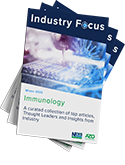In a recent study published in the PLOS Pathogens journal, researchers examine the present body of information regarding severe acute respiratory syndrome coronavirus 2 (SARS-CoV-2) interactions.

The survival of SARS-CoV-2 despite the widespread availability of effective vaccinations indicates that cocirculation with other viruses and the consequent multiepidemics may become more common. To better predict and limit the danger of such multiepidemics, it is crucial to clarify the potential connections between coronavirus disease 2019 (COVID-19) and other infections. Yet, these interactions remain poorly understood.
Analysis of pathogen interactions
Many factors are required to completely characterize pathogen interactions, which makes their general research difficult. To analyze interactions in a systematic and exhaustive manner, the team offered a conceptual framework that contains three important interaction components.
Indication and intensity of interaction
The first dimension of this paradigm is the interaction's sign and intensity. Here, the team defined interaction signs as positive for synergistic interactions and negative for antagonistic interactions. Interaction strength is defined as the extent of the impact on a particular parameter affected by a pathogen on another. For example, influenza A virus (IAV) infection reduces the growth of the human respiratory syncytial virus (RSV) in ferrets and mice, demonstrating a negative association.
Temporal dependency of interaction
Time dependence is the second dimension of the suggested framework. Both the interval between infections and the order of infections can influence the manifestation and intensity of interaction. Owing to the dynamics of hormonal and cellular immune responses to respiratory infections, the degree of interaction between illnesses might fluctuate over time. As demonstrated by the asymmetric effects observed in other investigations, the order of infection can also alter the interaction.
Interaction between biological mechanisms and population-level effects
The third dimension proposed is the interaction mechanism. Several biological pathways can induce interaction, which determines its positive or negative impacts on vulnerability to infection, infection features, or disease severity at an individual level and, subsequently, its effect at a population level. Additionally, a pathogen can elicit host cell alterations that are either advantageous or deleterious to another pathogen.
Review of existing data on SARS-CoV-2 interactions
Experimental evidence from animal models
Immunology eBook

Having provided a methodology for examining interactions, the team examined experimental data on SARS-CoV-2 coinfections in animal models. By 22 August 2022, 14 publications were identified. First, 11 studies that examined SARS-CoV-2 and IAV without attenuation were reviewed.
Throughout the 11 studies, three distinct animal models were utilized, and the experimental designs differed considerably, particularly in terms of the order of infection, the interval between infections, and the duration of follow-up. Nine research papers evaluated coinfections with IAV before SARS-CoV-2, six studies with SARS-CoV-2 before IAV, and five studies with simultaneous infections. Notably, only three of the studies examined each of the three infection sequences, while four studies analyzed the intervals between infections.
Epidemiological evidence
For at least two reasons, experimental research utilizing animal models is insufficient to predict the impact of pathogen interactions on human public health. Firstly, animal models cannot accurately demonstrate infection biology in humans. Secondly, experimental studies on animals may be underpowered to predict the comparative risk of infection or severe disease in co-infected versus monoinfected persons.
Studies based on SARS-CoV-2 coinfections
Research based on the identification of SARS-CoV-2 coinfections sought to answer two queries: (1) whether coinfection with other pathogens affects COVID-19 severity, and (2) whether the identification of other pathogens affects SARS-CoV-2 detection. The first query was answered by four meta-analyses with a total of 95 trials that reported mortality outcomes.
The first meta-analysis consisted of only four studies. The second meta-analysis projected a decrease in mortality among influenza-coinfected patients based on research conducted in China, but an increase based on studies conducted outside of China. In the two other meta-analyses, SARS-CoV-2 coinfections were associated with a greater mortality rate than SARS-CoV-2 infections alone.
The relationship between non-COVID immunization history and COVID-19
Interacting pathogens constitute polymicrobial systems; hence, therapies against one pathogen may potentially influence the others. A comprehensive review and two meta-analyses aggregated 30 observational studies exploring the relationship between COVID-19 infections and outcomes and the influenza vaccine. While the earlier systematic analysis suggested that only a few studies reported significant inverse relationships between influenza immunization and COVID-19-related outcomes, the more recent meta-analyses noted that influenza vaccination considerably reduces the risk of COVID-19 infection.
Conclusion
The study findings underscored the considerable gaps in the current understanding of SARS-CoV-2 interactions. Therefore, the proposed general framework for dissecting interaction may be valuable for guiding future studies in this field. The team suggests that mathematical models of transmission could provide an innately efficient method of incorporating this paradigm. The researchers believe that deciphering SARS-CoV-2 interactions will require the use of models developed with a multidisciplinary perspective that incorporates findings from several scientific domains.
- Wong A, Barrero Guevara LA, Goult E, Briga M, Kramer SC, et al. (2023). The interactions of SARS-CoV-2 with cocirculating pathogens: Epidemiological implications and current knowledge gaps. PLOS Pathogens. doi: https://doi.org/10.1371/journal.ppat.1011167 https://journals.plos.org/plospathogens/article?id=10.1371/journal.ppat.1011167
Posted in: Medical Science News | Medical Research News | Disease/Infection News
Tags: Cell, Coronavirus, covid-19, Immunization, Influenza, Mortality, Pathogen, Public Health, Research, Respiratory, Respiratory Syncytial Virus, SARS, SARS-CoV-2, Severe Acute Respiratory, Severe Acute Respiratory Syndrome, Syndrome, Vaccine, Virus

Written by
Bhavana Kunkalikar
Bhavana Kunkalikar is a medical writer based in Goa, India. Her academic background is in Pharmaceutical sciences and she holds a Bachelor's degree in Pharmacy. Her educational background allowed her to foster an interest in anatomical and physiological sciences. Her college project work based on ‘The manifestations and causes of sickle cell anemia’ formed the stepping stone to a life-long fascination with human pathophysiology.
Source: Read Full Article